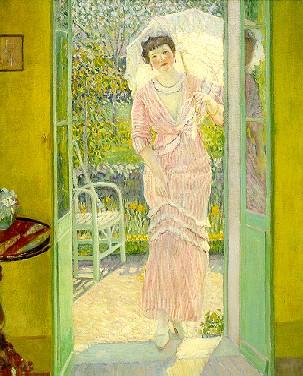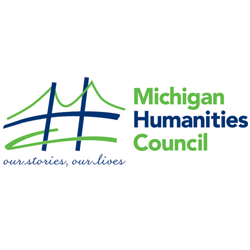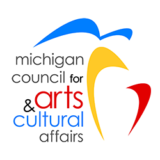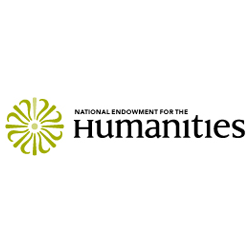FRIESEKE COLLECTION
Born in Owosso, Michigan, Frederick Frieseke studied at The Art Institute of Chicago beginning in 1893, before going East to the Art Students League in New York City in 1897, and then to Paris in 1898. There, he studied at the Acadamie Julian, and with James Abbott McNeill Whistler for a short period at the Acadamie Carmen.
Frieseke’s earliest mature works, images of individual women in interiors painted in fairly close tonalities, reflect Whistler’s influence, but once he and his wife settled, in 1906, in the art colony at Giverny, where Claude Monet resided, Frieseke rapidly developed a very original aesthetic which would have an impact upon almost all the later figural painters among the colonists.
The Friesekes rented a house, surrounded by tall walls, which had been the residence of Theodore Robinson, one of the founders of the Giverny art colony. There they developed a sumptuous, colorful garden which served as the setting for many of Frieseke’s pictures. In Giverny, Frieseke concentrated upon monumental images of women, usually single figures, posed in domestic interiors or sun-filled outdoor settings, often in the floral garden, his wife tended so conscientiously. But the rendition of sunlight, not flowers, was Frieseke’s primary concern. As he himself acknowledged in 1912, “It is sunshine, flowers in sunshine, girls in sunshine, the nude in sunshine, which I have been principally interested in for eight years. . .”
Frieseke’s art has often been identified as “Decorative Impressionism.” Despite the immediacy of the pose, and the moment of introduction defined by the picture’s present title, the emphasis on pattern and decoration in the model’s striped dress, contrasted with the sparkling color pattern of the garden’s blooms, and the concomitant flattening, two-dimensional effects, ally the work more with the painting of the Post-impressionists than with the perceptual aesthetics of orthodox Impressionism.
Marcelle, one of the artist’s favorite models, appears in many of his pictures. The parasol–a literal sun shade–is a very common motif in Frieseke’s art; it both protects his lovely female models and further emphasizes their position as articles of beauty and recipients of the spectator’s gaze.
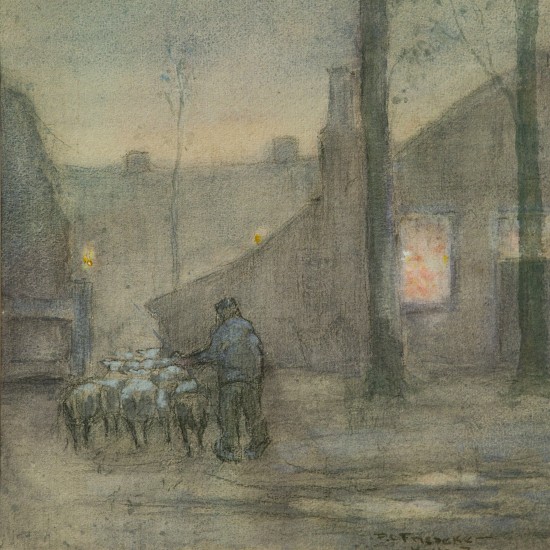
“The Sheepfold” | Holland
Frederick C. Frieseke 1898
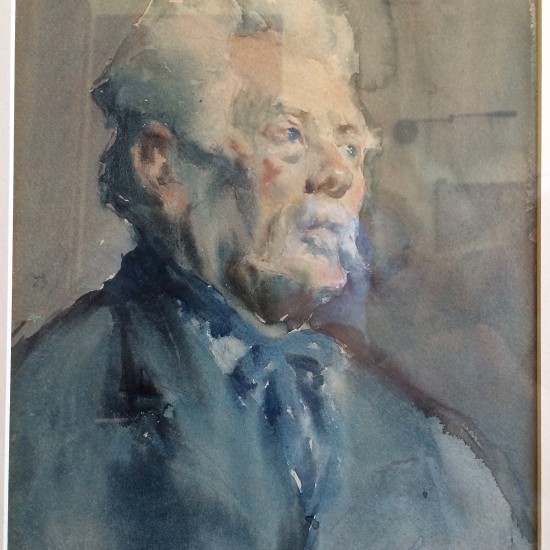
Portrait of Elijah H. Foote | Watercolor
Frederick C. Frieseke 1898
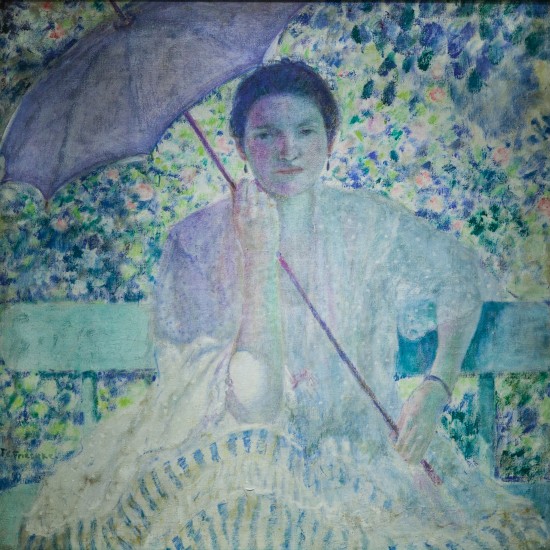
“Lady with the Sunshade” | Oil on canvas
Frederick C. Frieseke 1910
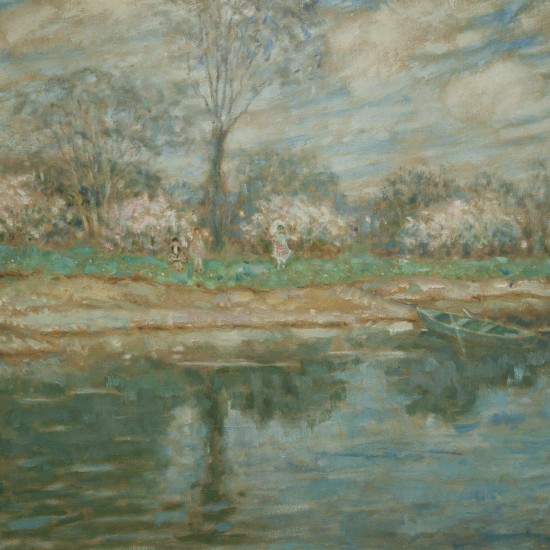
Along the Shiawassee | Oil on canvas
Frederick C. Frieseke 1925

“Afternoon Tea on the Terrace” | Oil on Canvas
Frederick C. Frieseke 1906
Gifted to the Shiawassee Arts Center
by
Hank and Liesel Meijer
December 10, 2024

“Dressing” | Oil on Canvas
Frederick C. Frieseke 1920
Gifted to the Shiawassee Arts Center
by
Cheryl and Harlow Murray
In loving Memory of
Esther and Charles Sanders
October 20, 2024
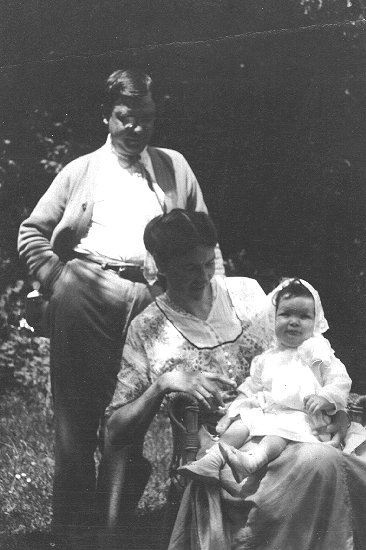
Frederick and Sadie with their daughter, Frances.
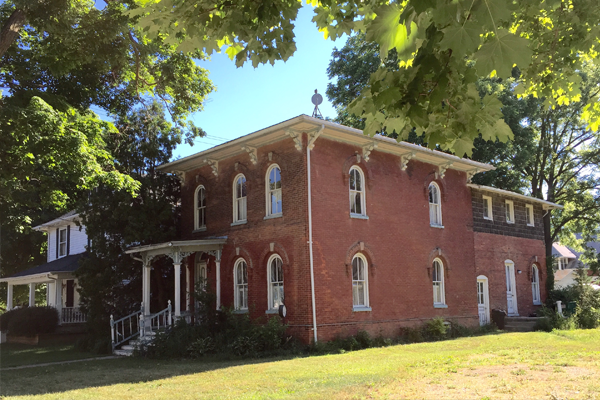
Frieseke birthplace, 654 North Water Street, Owosso, Michigan. The house was built in 1872 with brick from the Hermann (father) and Julius (uncle) Frieseke Brickyard.
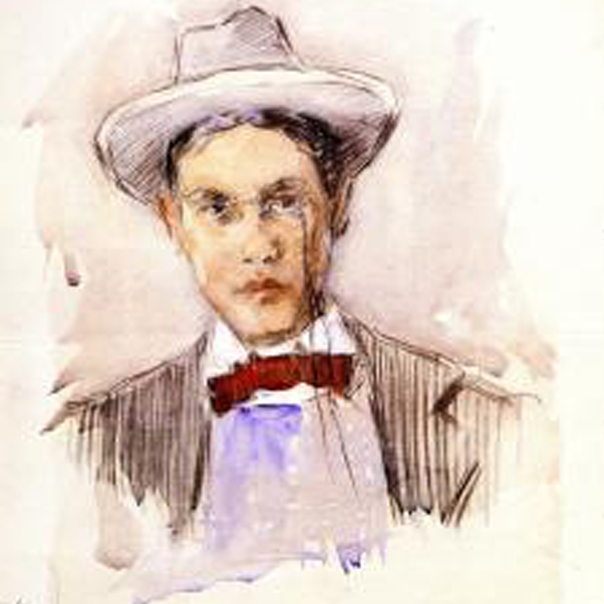
Artist Self-portrait.
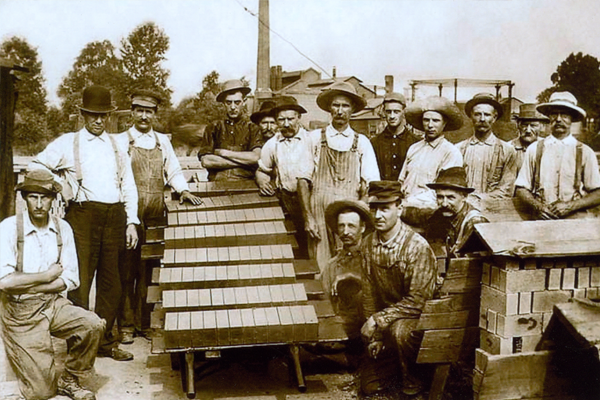
Frieseke Brickyard, South Washington Street, Owosso, Michigan.

